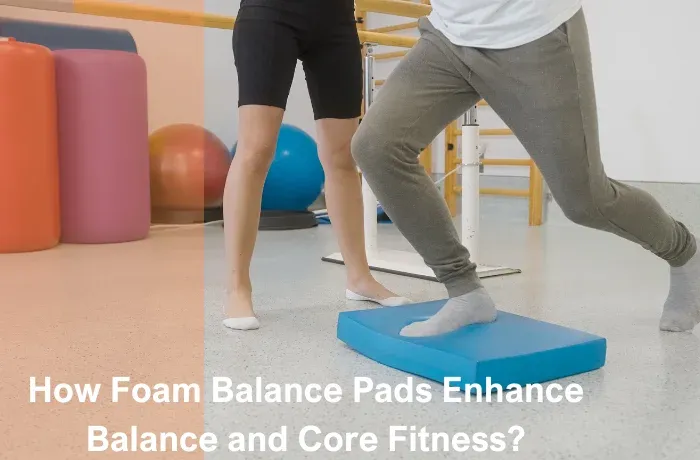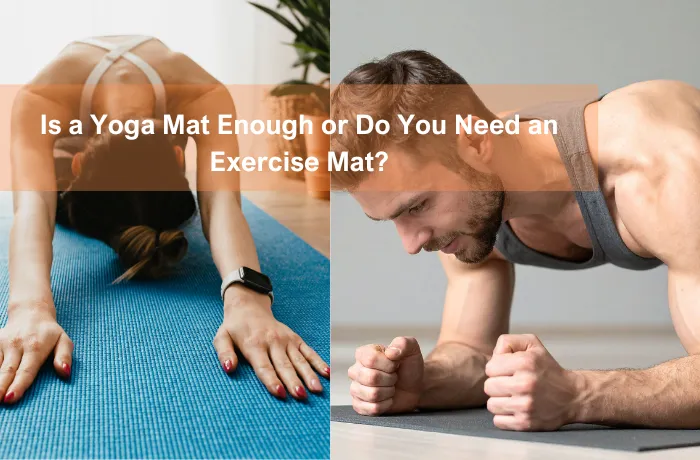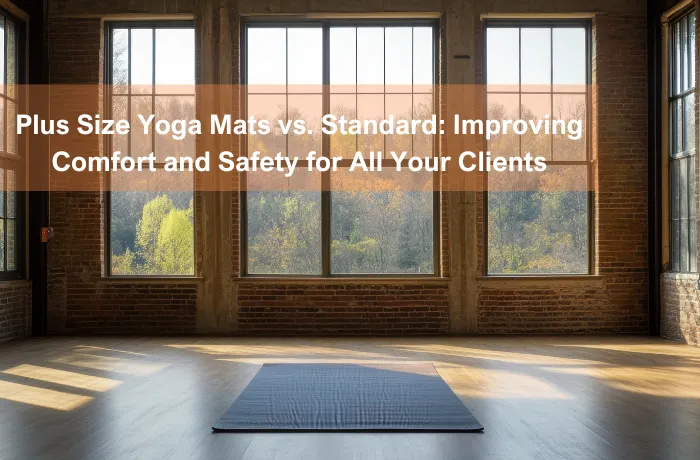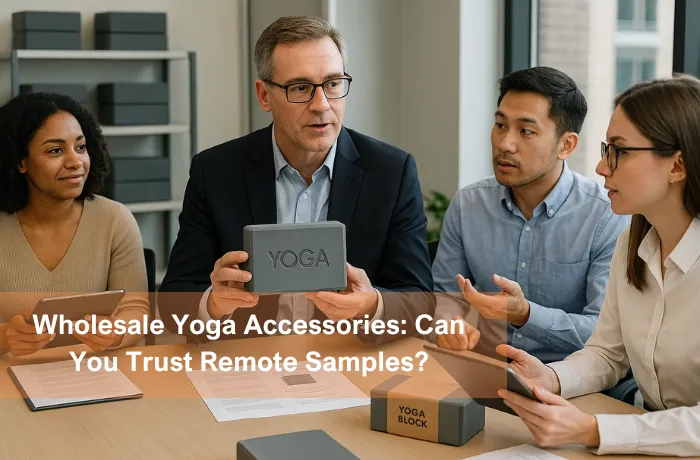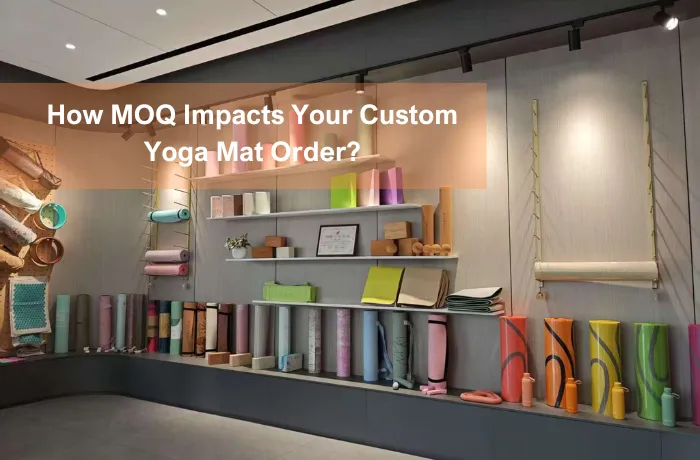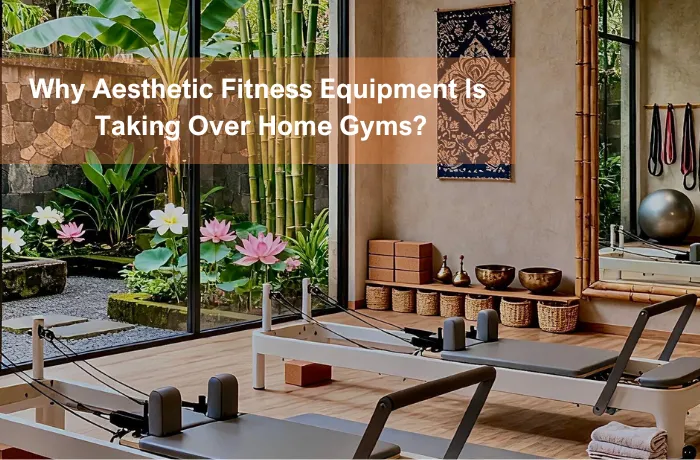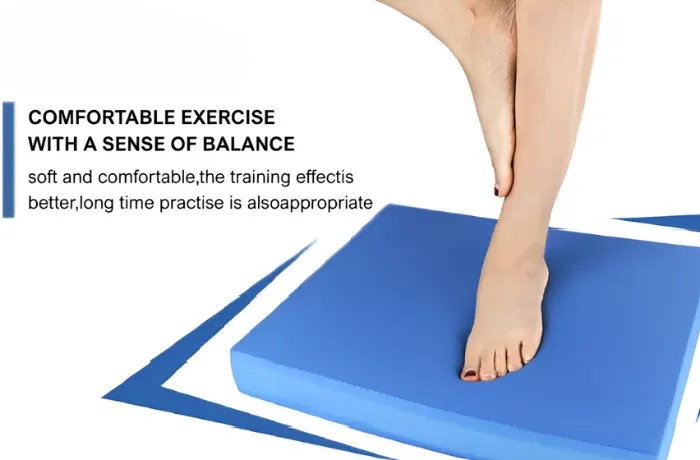
Have you ever stood on a wobbly surface while exercising? It’s tough, isn’t it? That’s what a foam balance pad does—it creates an unsteady surface. This makes your stabilizing muscles work harder to keep balance. This tool isn’t just for athletes; it’s helpful for anyone. It can improve your balance and strengthen your core. Research shows using these pads lowers the risk of falling. It also helps you stay steady over time. Whether you’re new or love fitness, this pad can boost your workouts.
Key Takeaways
- Foam balance pads help you stay steady by working small muscles. Add them to workouts to make daily tasks easier.
- Build a strong core with foam pads. Easy moves like standing on one leg wake up deep core muscles, improving posture and support.
- Foam pads lower the chance of injuries by making joint muscles stronger. They are great for healing, helping you recover safely and regain strength.
- These pads work for everyone, no matter your fitness level. Begin with simple moves and try harder ones as you get stronger and more confident.
- Practice often. Use foam balance pads regularly to get better at balancing and building core strength over time.
Benefits of Using a Foam Balance Pad
Improves Balance and Stability
A foam balance pad is an easy way to improve balance. Standing or moving on it makes your body adjust constantly. These small adjustments activate muscles in your legs, ankles, and core. Over time, this helps you stay steady in daily activities.
Studies support this too. Research shows stiffer foam pads work best for balance. People using these pads had less swaying and became more stable. If you want better balance and stability, try adding a foam pad to your workouts.
Strengthens Core Muscles
Your core muscles are the body’s main support system. They help you stand, move, and protect your spine. A foam balance pad makes these muscles work harder to keep you steady. Simple moves like standing on one leg or planking on the pad can engage your core more than flat surfaces.
Research proves this. One study found older adults improved balance more with foam pads than flat surfaces. Another study showed foam pads activate deep core muscles. This means using a foam pad not only improves balance but also builds a stronger core.
Enhances Coordination and Posture
Good coordination and posture help you move better and avoid injuries. A foam balance pad can improve both. Exercises on the pad teach your body to move in sync. The unstable surface makes your brain and muscles work together.
Studies also show foam pads improve posture. In one study, people using foam pads had better spinal movement and stability. These results were better than traditional training methods. If you want to stand straighter and move smoothly, a foam pad can help a lot.
Supports Injury Prevention and Recovery
Foam balance pads are useful for more than just fitness. They help prevent injuries and aid in recovery. Using one strengthens muscles near your joints, like your ankles and knees. Stronger muscles lower the chance of sprains or strains. If you’re healing from an injury, the pad lets you rebuild strength safely. It also improves coordination without stressing your body too much.
Here’s what research says about foam balance pads and injuries:
| Study Focus | Benefit Achieved | Group Studied |
|---|---|---|
| Balance Training | Better balance and improved coordination | Patients in rehabilitation |
| Balance Training | Cuts ankle sprains by up to 50% | Athletes in sports like soccer and basketball |
| Balance-focused exercises | Lowers leg injuries by about 30% | Soccer players |
Athletes can use this tool to avoid injuries and stay active. For rehab patients, it’s a gentle way to regain strength and balance.
Tip: Begin with easy moves like standing on the pad with both feet. As you improve, try standing on one leg or doing harder exercises to challenge yourself.
Suitable for All Fitness Levels
Foam balance pads are great for everyone, no matter their fitness level. Beginners, seniors, and athletes can all benefit from using them.
- Foam pads work for people at all levels, from new users to experts.
- Brands like Vitos® Fitness BALANCE FOAM PAD help athletes improve balance and coordination.
- The ProsourceFit Exercise Balance Pad is another option for all ages and skill levels.
If you’re new, start with simple exercises like sitting or standing on the pad. Advanced users can make workouts harder by adding dynamic movements. Foam pads help build strength and stability for everyone, no matter their experience.
Note: Pay attention to your body. If an exercise feels too hard, try something easier instead.
How to Use a Foam Balance Pad Effectively?
Choosing the Right Foam Balance Pad
Picking the best foam balance pad can improve your workouts. Pads are different, so choose one that fits your goals.
| Criteria | Description |
|---|---|
| Material | Pick high-density foam or rubber for comfort. |
| Size | Choose larger mats based on your exercises and space. |
| Thickness | Look for 6mm-8mm thick mats for better support and balance. |
| Wear Resistance | Make sure the mat can handle tough workouts without damage. |
If you want better balance, thicker pads give more support. For active moves, pick strong materials that last longer. Take time to find a pad that works well and feels good.
Tip: If you can, try the pad before buying. Stand on it to see if it’s stable and comfy.
Proper Form and Posture for Beginners
Using the right form is important when starting with a foam pad. It keeps you safe and helps you get stronger. Follow these steps to begin:
- Stand with feet shoulder-width apart for a steady base.
- Move your weight slowly to stay balanced.
- Clear the area around you to avoid accidents.
- Look at one spot to help you stay steady.
- Listen to your body and adjust if something feels wrong.
- Go slow and improve as your balance gets better.
These tips help you feel confident using the pad. Start simple by standing still or shifting your weight. Once you’re ready, try harder exercises.
Note: Feeling wobbly is normal at first. Your muscles will get stronger with practice.
Progressing to Advanced Techniques
After learning the basics, you can try harder foam pad exercises. These moves challenge your core and improve fitness.
Do single-leg squats or step on and off the pad. Add weights or resistance bands to make it harder. For example, hold a dumbbell while doing lunges on the pad. These exercises work your muscles more and build strength.
Pro Tip: Use foam pads with tools like medicine balls or kettlebells for a full workout.
Take your time and increase difficulty as you improve. Advanced moves make workouts fun and help you get stronger.
Common Mistakes to Avoid
When using a foam balance pad, it’s easy to make mistakes that can reduce its effectiveness or even lead to discomfort. Don’t worry—these are common, and with a little awareness, you can avoid them. Let’s go over some of the most frequent errors and how to fix them.
- Rolling Directly on Painful Areas
It might seem logical to target the spot where you feel pain, but this can actually make things worse. Rolling directly on a sore area can increase inflammation instead of relieving it. Instead, focus on the surrounding muscles to ease tension and improve blood flow. - Moving Too Quickly
Speeding through your movements might feel like you’re getting more done, but it doesn’t give your muscles enough time to relax. Slow, controlled motions are key. Take your time to let your body adapt to the pressure and engage the right muscles. - Spending Too Much Time on Knots
While it’s tempting to stay on a tight spot until it feels better, overdoing it can cause bruising or even nerve damage. Limit your time on any one area to about 20–30 seconds. If the tension persists, revisit it later rather than overworking it. - Using Poor Posture
Slouching or misaligning your body while exercising on the pad can do more harm than good. Poor posture can worsen existing issues and make it harder to balance. Always keep your back straight, shoulders relaxed, and core engaged. - Targeting the Lower Back
Rolling on your lower back might seem like a good idea, but it can cause muscle contractions and discomfort. Instead, focus on your hips and upper back to indirectly relieve tension in the lower back area.
Tip: If you’re unsure about your form, practice in front of a mirror or ask a trainer for guidance. Small adjustments can make a big difference!
By avoiding these mistakes, you’ll get the most out of your foam balance pad while staying safe. Remember, it’s all about quality over quantity. Slow down, focus on your form, and listen to your body.
Exercises to Improve Balance and Core Strength
Basic Balance Hold
The basic balance hold is easy and helps improve balance. Stand on the foam pad with both feet. Bend your knees a little and relax your arms. Look at one spot in front of you to stay steady.
This move works your stabilizing muscles, especially in your ankles and core. It’s great for beginners because it builds strength for harder exercises. Hold this position for 20–30 seconds. As you improve, try holding it longer.
Tip: Feeling shaky is normal at first. Practice will make your muscles stronger.
Single-Leg Stance
The single-leg stance is a step up in balance training. Stand on the foam pad and lift one foot off the ground. Bend the lifted leg at a 90-degree angle. Keep your arms steady and hold for 15–20 seconds. Then switch legs.
This move boosts coordination and body control, which helps in sports and daily life. Research shows single-leg exercises on foam pads lower fall risks and improve stability.
| Study Title | Description |
|---|---|
| Effects of balance training with visual input manipulations on balance performance and sensory integration in healthy young adults | This study showed single-leg stances on foam pads improve balance. |
- Balancing on foam pads improves coordination and control.
- Single-leg exercises are important for better body control in sports.
- Good balance helps prevent falls.
- Single-leg stances can greatly lower the chance of falling.
Pro Tip: Want a harder challenge? Close your eyes while doing this. It makes your muscles work harder and improves stability.
Plank Variations
Plank variations on foam pads are great for core strength. Start with a basic plank by placing your forearms on the pad. Keep your body straight from head to heels. Tighten your core and hold for 20–30 seconds.
When ready, try harder moves like side planks or leg lifts. These target different muscles and make workouts more exciting. Foam pads make planks harder because the surface is unstable. This forces your core to work more to stay balanced.
Note: Keep your back straight and don’t let your hips drop. Good form helps you get stronger and avoid injuries.
Squats and Lunges
Doing squats and lunges on a foam balance pad makes workouts harder. These moves don’t just build leg strength—they also improve balance. The unstable surface makes your muscles work more to stay steady. This activates your core and stabilizing muscles, giving you a full-body workout.
Here’s what you get by using a foam pad:
- Better balance and stability
- Improved body awareness (knowing how your body moves)
- Stronger legs, especially your quads, hamstrings, and glutes
- Core muscles working harder for stability
- Stronger ankles and knees
- Improved coordination and movement skills
To start, try basic squats. Stand on the pad with feet apart. Lower yourself slowly, keeping your back straight. For lunges, place one foot on the pad and step forward with the other. Bend your knees until your back leg is almost flat with the ground. These moves test your balance while building strength.
Tip: Want a bigger challenge? Hold a dumbbell or medicine ball. This adds weight and makes your muscles work harder.
Dynamic Movements for Advanced Users
Dynamic exercises on foam pads are great for advanced users. These moves mix strength, balance, and coordination. They’re perfect for improving athletic skills.
Start with step-ups. Step onto the pad with one foot, then bring the other foot up. Step back down and repeat. This tests your balance and keeps your stabilizing muscles active.
Lateral kicks are another fun option. Stand on the pad with one foot and lift the other leg to the side. Keep your core tight and move slowly. This exercise improves balance and builds strength.
Dynamic moves like these are both fun and useful. They help you get stronger and improve coordination. Plus, they make workouts more exciting.
Pro Tip: Use tools like resistance bands or kettlebells with these moves. This makes your workout even harder and more effective.
Tips for Getting the Most Out of a Foam Balance Pad
Begin with Easy Moves
Start with simple moves to get used to the foam pad. Try standing still or shifting your weight side to side. These exercises help you feel steady and wake up stabilizing muscles. They’re great for beginners and lower the chance of getting hurt.
Studies agree that basic balance exercises are helpful. Research shows warm-up balance drills can reduce basketball injuries. Poor balance, on the other hand, raises the risk of ankle sprains in young athletes. Here’s what the studies found:
| Study | Key Findings |
|---|---|
| Emery et al | Warm-up balance drills lower basketball injuries. |
| McGuine and Keene | Balance training cuts ankle sprains in young players. |
| McGuine et al | Poor balance leads to more ankle injuries in teens. |
Tip: Start easy with standing or shifting your weight. Once you’re ready, try harder moves like single-leg stands or planks.
Stay Consistent and Keep Improving
Practice regularly to get better at using the foam pad. Doing it often helps your muscles adjust and makes you more stable. As you improve, make your exercises harder. Try standing on one leg or adding movement to challenge yourself.
Research shows that sticking to a routine and increasing difficulty works well. Changing your stance or using uneven surfaces boosts balance. Studies also show regular training improves how long you can hold a stance.
Pro Tip: Practice often and slowly make exercises harder. This keeps workouts fun and helps you improve faster.
Use Other Fitness Tools Together
Foam pads work even better with other fitness gear. Add resistance bands, dumbbells, or medicine balls to your exercises. This makes workouts more interesting and builds stronger muscles. It also improves your balance and body control.
People who enjoy functional fitness love combining tools. It helps prevent injuries and strengthens muscles that keep you steady. For example, try squats with a dumbbell or lunges with a resistance band on the foam pad.
Note: Mix foam pad exercises with regular workouts. This keeps things exciting and helps you see better results.
Listen to Your Body and Rest as Needed
When you’re working on your balance and core strength, it’s easy to get caught up in pushing yourself. But here’s the thing—you need to listen to your body. Overdoing it can lead to fatigue or even injuries, which can slow down your progress. Rest isn’t just about taking a break; it’s a key part of getting stronger and healthier.
Your body gives you signals when it needs rest. Feeling unusually tired, sore, or unsteady during exercises? That’s your body’s way of saying, “Take it easy.” Ignoring these signs can lead to burnout or strain. Instead, give yourself permission to pause and recover.
Tip: Rest days don’t mean doing nothing. Try light activities like stretching, yoga, or a short walk to keep your body moving without overloading it.
Here’s why rest is so important:
- Muscle Recovery: When you exercise, your muscles work hard and need time to repair. Rest helps them rebuild stronger.
- Improved Performance: Taking breaks allows your body to recharge, so you can perform better during your next workout.
- Injury Prevention: Overworking your muscles or joints increases the risk of injuries. Rest keeps you safe and ready for the next challenge.
You don’t have to follow a strict schedule. Some days, you might feel great and ready to push harder. Other days, you might need to slow down. Trust your instincts and adjust your routine as needed.
Pro Tip: Keep a journal to track how you feel after each workout. This helps you notice patterns and plan rest days when your body needs them most.
Remember, rest isn’t a setback—it’s part of the process. By listening to your body, you’ll build strength, improve balance, and stay consistent in the long run.
A foam balance pad is an easy way to boost fitness. It helps make your core stronger and improves your balance. It’s also great for recovering from injuries safely. You can adjust exercises to fit your level, so it works for everyone. Its gentle design makes workouts safe and effective. Begin with simple moves and practice often. Over time, your strength and balance will improve. Using it regularly will help you move better and feel more confident every day.
FAQ
What is a foam balance pad made of?
Foam balance pads are usually made of high-density foam. This material provides a soft yet durable surface that’s slightly unstable. It’s designed to challenge your balance while staying comfortable underfoot.
Can beginners use a foam balance pad?
Absolutely! Foam pads are perfect for beginners. Start with simple exercises like standing still or shifting your weight. As you get more comfortable, you can try more challenging moves.
Tip: If you’re nervous, place the pad near a wall for extra support.
How often should I use a foam balance pad?
You can use it 2–3 times a week. Consistency is key. Short sessions of 10–15 minutes can improve your balance and core strength over time.
Are foam balance pads safe for seniors?
Yes, they’re great for seniors! Foam pads help improve stability and prevent falls. Start with basic exercises and progress slowly.
Note: Always consult your doctor before starting a new fitness routine, especially if you have health concerns.
Can I clean my foam balance pad?
Yes, cleaning is easy. Wipe it down with a damp cloth and mild soap. Avoid harsh chemicals, as they can damage the foam. Let it air dry completely before using it again.
Pro Tip: Regular cleaning keeps your pad hygienic and extends its lifespan.

